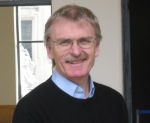Links to external sources may no longer work as intended. The content may not represent the latest thinking in this area or the Society’s current position on the topic.
H5N1 research: biosafety, biosecurity and bioethics
An international scientific meeting to discuss the practice and policy of H5N1 research, with a programme of talks and discussions organised by Professor John Skehel FRS and Professor Simon Wain-Hobson.
The journals Nature and Science have recently received papers from two teams of researchers showing that the H5N1 virus could mutate into a form that could spread rapidly among a human population. Various national and international bodies have expressed concern that the safety and security of both the research worker and wider society needs to be considered before work of this kind is published in full. Set against this is the basic principle of openness in science: scientists should operate openly and publish their findings. This conference will discuss virus research, and the safety, security, and ethical aspects from the perspectives of researchers, publishers, policymakers and funders.
Biographies of the organisers and speakers are available below and you can also download the programme (PDF). Video recordings of the presentations are available in the outline below.
Organised by the Royal Society in partnership with the Academy of Medical Sciences and the Foundation for Vaccine Research with support from the American Society for Microbiology, the Bill & Melinda Gates Foundation, Fondation Mérieux, the German National Academy of Sciences Leopoldina, Institut Pasteur, and the Society for General Microbiology.


